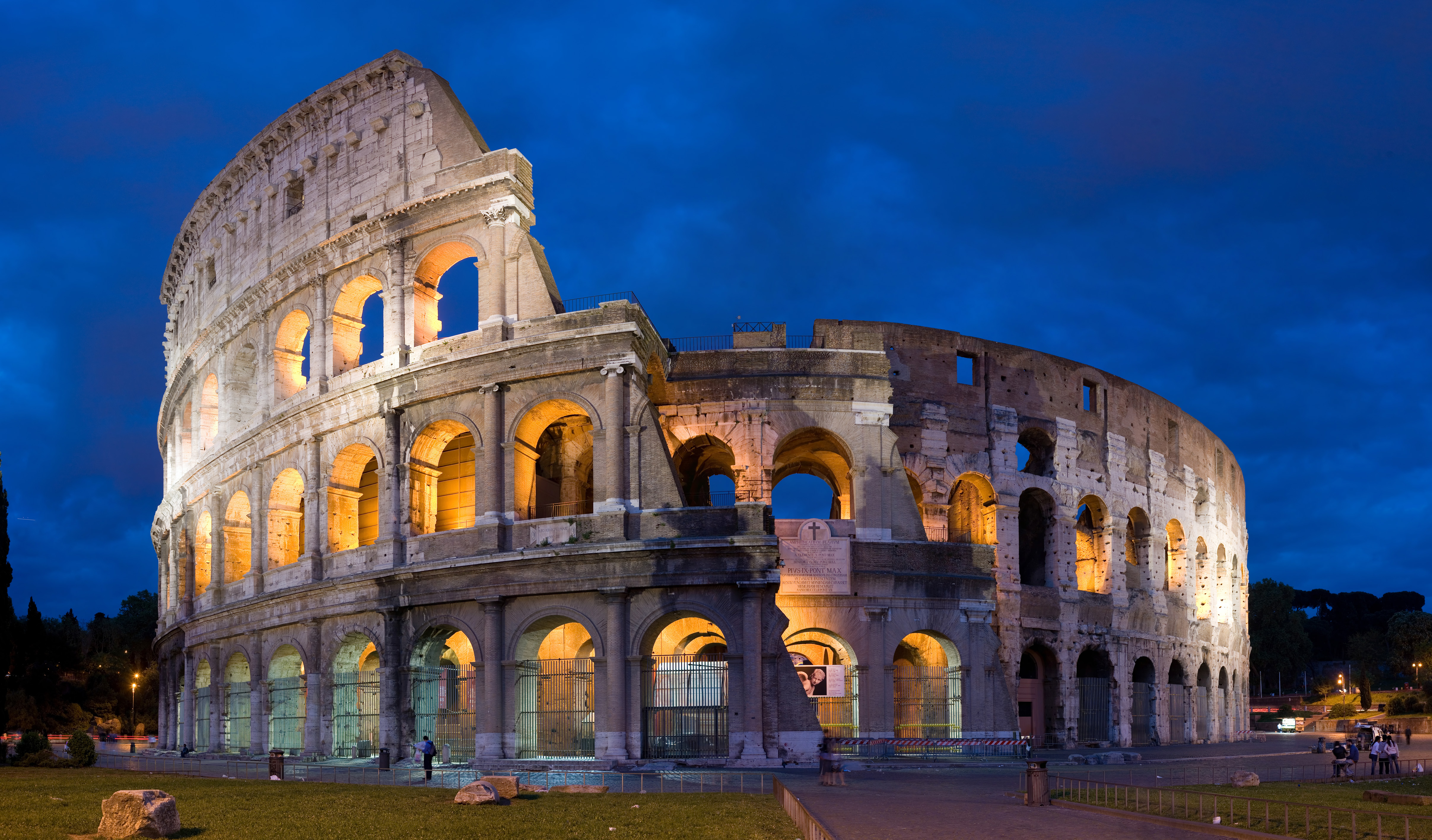 Hi guys & girls, today we'll be fast forwarding about 600 years to about 80 CE and taking a look at some Roman architecture, specifically the Roman Colosseum.
Hi guys & girls, today we'll be fast forwarding about 600 years to about 80 CE and taking a look at some Roman architecture, specifically the Roman Colosseum.I'm sure you're all familiar with the Colosseum, pictured here to the upper left. What you may not know is why it was built, what purpose it served for its builders, and why it's survived for as long as it has.
Originally started under the emperor Vespasian and capable of seating more than 50,000 people, the Colosseum was a masterpiece of engineering at the time of its construction. It was built primarily for public displays ... plays, animal hunts, gladiatorial fights, executions, etc. Even though it stopped being used for entertainment, it's legacy as a forum for gladiatorial contests, the likes of which we've seen in the movie "Gladiator", will easily endure for the foreseeable future.
It was built with 100,000 cubic tons of travertine stone held together, not with plaster, but with iron clamps. While most of the structure still stands, vast portions have been damaged through disasters, both human-caused and natural, such as fires, pillaging, earthquakes, lightning, etc.
Despite all of the damage, the vast majority of the building remains standing. The sheer longevity of the Colosseum- almost 2 millennia now - is truly a testament to Roman engineering and architecture.
PS: A larger version of the picture above can be seen here.
No comments:
Post a Comment